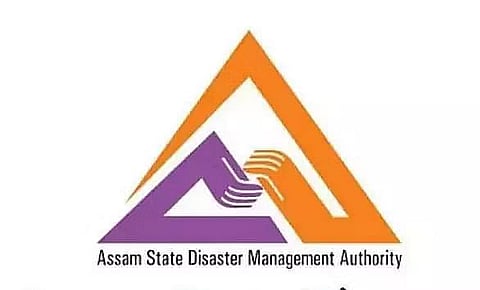
- Home
- Live Blog
- Breaking News
- Top Headlines
- Cities
- NE News
- Sentinel Media
- Sports
- Education
- Jobs

Early warning dissemination systems play a crucial role in disaster risk mitigation in a disaster-prone state like Assam. The move by the Assam State Disaster Management Authority (ASDMA) to install and commission a cell broadcast (CB)-based integrated public alert and warning system for the state is laudable. The quality of hazard monitoring, disaster risk assessment, and disaster forecasting are key determinants of the effectiveness of a CB alert system. One of the key objectives of the proposed system is to facilitate the creation and dissemination of CB-based geo-targeted severe disaster alerts like floods, earthquakes, and evacuations to millions of people located in different regions of the state in near real-time. It also seeks to deploy and activate CB integration platforms in physical/virtual infrastructure at the telecom operator level to integrate the mobile telecom network. The development of an early warning system is part of the World Bank-financed Assam Integrated River Basin Management Programme to reduce the vulnerability of people to climate-related disasters. The rehabilitation, relief, and rescue of disaster-hit people require huge funds. Apart from saving lives, an early warning system that alerts people to take caution can help reduce the amount of funding needed for relief and rehabilitation. Such savings can go into building the resilience of affected people through the adoption of modern and climate-resilient farm technology. One of the basic features of the proposed CB-based alerts is that they are alerts or warnings in the form of easily identifiable ringtones and vibrations and are automatically displayed on the mobile device screen of cell phone subscribers in the target area. Such a system being non-subscription-based is important so that the message gets delivered without the phone subscribers signing for such a service. Informing people well in advance about activating an early warning system is important so that they do not ignore it as one of the scores of unsolicited messages received daily on their cell phones. Building awareness among the targeted people as to what they should do after receiving the alerts is of paramount importance for achieving the real objective. The targeted people remaining passive recipients of an early warning alert are not going to make much difference. They must play an active role in spreading awareness and volunteer to help other people in their immediate neighbourhood who require assistance to cope with the impending disaster. The release of excess water from an overflowing hydroelectric dam results in flooding downstream areas. If people living in areas with such potential hazards can be alerted in time, they can shift to safer places and also move some of their belongings to reduce property losses due to the resultant flood. Reports of the CB alert system of the National Disaster Management Authority (NDMA) failing to issue an alert during an earthquake occurrence in Delhi last year raised an alarm over the gaps in the system, which needs to be kept in mind. One explanation of the failure was that shaking was less than a certain value measured by the system when people in multi-storey apartments felt it indoors even though people outside could not feel it. While setting the value, it is arrived at scientifically based on the possible impact so that the system does not send out an alert of a situation that is not severe but is insignificant enough to cause a disastrous impact. Alerting people through the CB system in such a situation will only make people ignore future messages as insignificant, and this may prove costly during a severe disaster. The NDMA and the Department of Telecom carried out a series of tests of the CB alert system pan-India, but it was not followed by building awareness on the importance of an early warning system and what people are expected to do after an alert is issued. Language plays a crucial role in disaster communication, and the delivery of messages in local languages is essential to making people understand the severity of the situation. While a machine-based early warning system can be expected to improve disaster preparedness, other forms of disaster mitigation, such as raising, strengthening, repair, and maintenance of flood embankments, plugging of breaches, and avoiding construction activities in landslide-prone areas, also need to be prioritised. Another key non-structural flood mitigation measure in the state that continues to be overlooked by disaster planners and policymakers is flood plain zoning. Demarcatation of flood-prone zones and notifying the prohibition of any settlement in the identified zones will significantly reduce the number of human settlements in low-lying and flood-inundation areas. This can be initiated, at least in areas that do not involve relocation but are potential sites of new human settlement. Such a step can help the state overcome the hurdles of the huge cost involved in relocating people settled in flood plain zones.